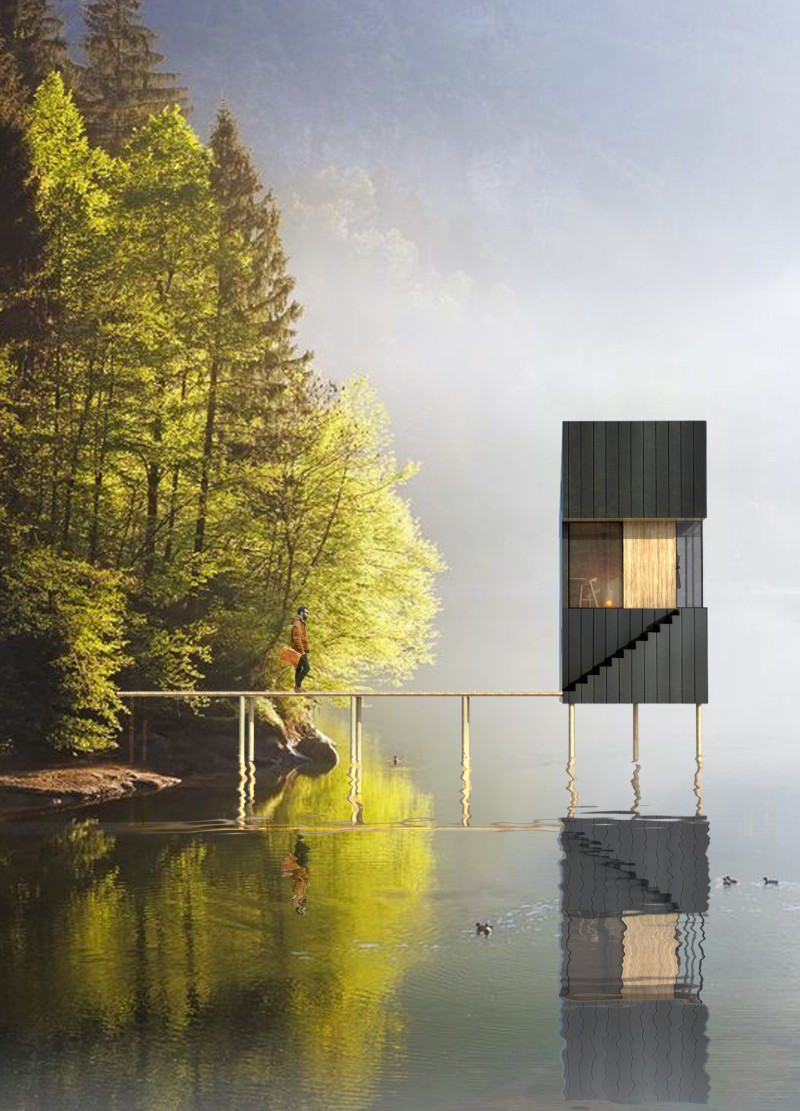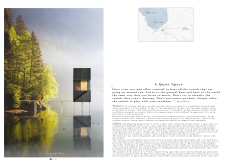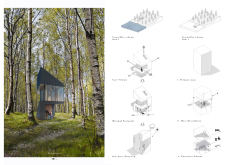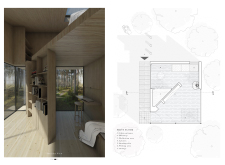5 key facts about this project
Located in the Gulf of Riga, within the areas of Rigat, Ozolini, and Teamakers, the project aims to create a peaceful retreat that blends with its natural environment. The design focuses on forming a quiet space that meets the various challenges posed by local weather conditions, such as rain, snow, cold, heat, and insects. It is built with the intent to promote calmness and reflection for its users.
Geometric Integration
The design employs a geometric approach, featuring a cube-like structure that enhances spatial organization. This form allows for effective use of space while ensuring it fits well within the natural landscape. Certain parts of the exterior mass have been carefully removed to accommodate essential functions, including staircases and heating storage. The sloping roof design effectively addresses local snow management needs.
Functional Organization
The layout prioritizes open areas, fostering meditation and engagement with the surrounding nature. The entrance serves as a transition zone, blending indoor and outdoor spaces while providing a welcoming area for reflection. The upper levels contain sleeping areas and storage, arranged to promote connectivity among the different rooms. The gallery’s placement allows occupants to remain linked to shared spaces, enhancing communal interaction.
Material Considerations
Wood serves as the primary material within the building's interior. This choice contributes warmth and a tactile link to the natural surroundings. The selection of wood aligns with the overall goal of creating a calming environment. Additionally, the design draws inspiration from traditional construction methods, providing a thoughtful approach that respects the local architectural context while incorporating modern elements.
Design Detailing
The sloped roof is not only a visual element; it also plays a crucial role in managing snow accumulation. By minimizing contact with the ground, the design reduces any negative impact on the environment while enhancing a sense of openness. This careful attention to form and function enriches the overall experience, allowing occupants to enjoy a tranquil connection with the landscape surrounding them.






















































